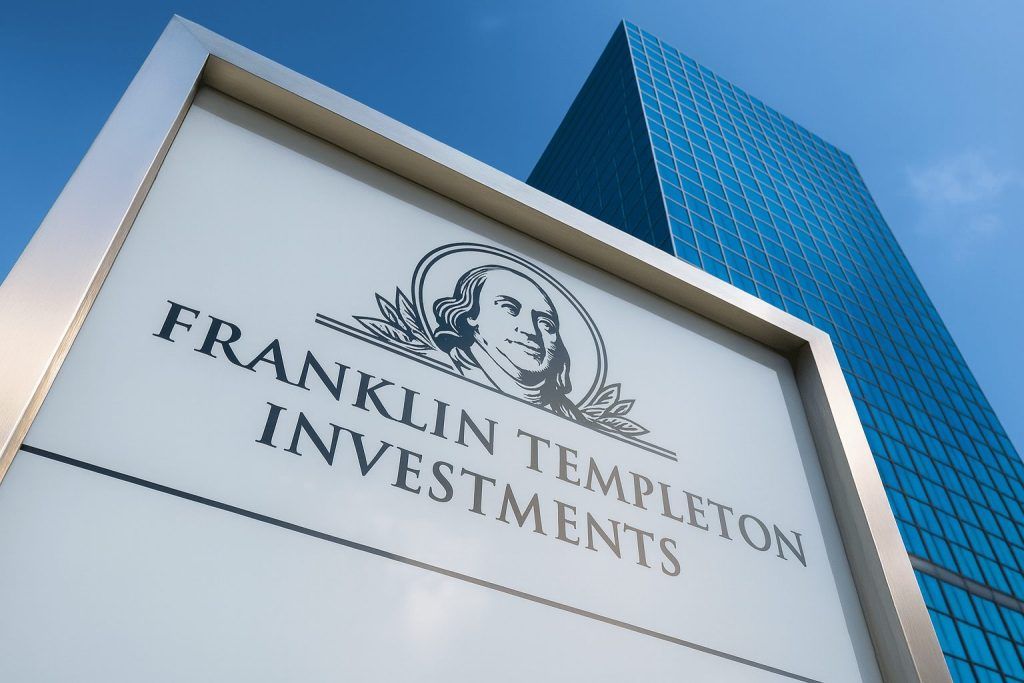General Motors (NYSE: GM) heads into the final week of November trading near its 52‑week high, backed by stronger‑than‑expected third‑quarter earnings, a major shift in its EV and supply‑chain strategy – and, as of today, fresh headlines about institutional investors and a new engine lawsuit.
Below is a detailed look at where GM stock stands as of Sunday, November 23, 2025, and what today’s news flow means for investors.
GM stock snapshot for November 23, 2025
U.S. equity markets are closed today (Sunday), so the latest full trading data are from Friday, November 21, 2025:
- Last close: about $70.33 per share
- Move on Friday:+3.37% (roughly +$2.29 on the day) [1]
- After-hours indication: around $70.50 [2]
- Market cap: roughly $65–66 billion [3]
- Trailing P/E ratio: about 14.1× earnings [4]
- Price-to-book: ~0.96×, signaling a “value” multiple versus many U.S. large caps [5]
- Dividend:$0.15 per quarter (about $0.60 annually, ~0.85–0.9% yield) with the next ex‑dividend date on December 5, 2025 and payment on December 18, 2025 [6]
- 52‑week range:$41.60 – $72.87, with the high set on November 13, 2025 [7]
- 1‑year performance: roughly +26–27% over the past 12 months [8]
At roughly $70 per share, GM trades just a few percent below its 52‑week high, reflecting a sharp rebound from its April lows even as the company trims EV ambitions and navigates tariff and quality risks.
Today’s key GM headlines – November 23, 2025
1. Big institutions reshuffle their GM stakes
Two new institutional ownership updates published today highlight how “big money” is positioned in GM stock:
- Swiss National Bank cut its GM position by 5.7% in Q2, selling 176,300 shares and ending the quarter with 2.93 million shares, or about 0.31% of the company, worth roughly $143.9 million. [9]
- Legal & General Group Plc, by contrast, increased its stake and now holds 10.14 million shares, valued at about $499.2 million, representing roughly 1.07% of GM. [10]
MarketBeat’s round‑ups accompanying those filings underline a few key points:
- Institutional ownership is very high, at about 92.7% of outstanding shares, with large positions from Vanguard, AQR, Dimensional, Invesco and Hotchkis & Wiley. [11]
- Insiders have been net sellers over the last 90 days, unloading about 2.3 million shares (roughly $138 million), including a notable 260,600‑share sale by GM President Mark Reuss. [12]
For investors, the signal is mixed:
- Heavy institutional ownership and incremental buying by long‑term asset managers suggest Wall Street still sees GM as attractive at current levels.
- At the same time, ongoing insider selling can cool enthusiasm, especially when the stock is near a one‑year high.
2. New class‑action lawsuit targets GM’s L87 V8 engines
The most eye‑catching negative headline today is a fresh V8 engine class‑action lawsuit targeting GM’s L87 engines.
According to CarComplaints.com, an Illinois owner of a 2024 GMC Sierra 1500 has filed a class action in the U.S. District Court for the Eastern District of Michigan, alleging that certain GM vehicles equipped with the L87 V8 contain defective connecting rod bearings and crankshaft components that can destroy the engine. [13]
The suit covers high‑profile, high‑margin nameplates, including:
- Cadillac Escalade / Escalade ESV (2021–2024)
- Chevrolet Silverado 1500 (2019–2024)
- Chevrolet Tahoe & Suburban (2021–2024)
- GMC Sierra 1500 (2019–2024)
- GMC Yukon / Yukon XL (2021–2024) [14]
Key allegations and data points:
- GM has allegedly known of the defect since at least 2021.
- GM and U.S. regulators are reportedly aware of more than 28,000 field complaints or incidents, including over 14,000 allegations of loss of propulsion, 12 crashes and 12 injuries tied to these engines. [15]
- An earlier recall covering nearly 600,000 L87 engines is described in the complaint as insufficient, with the lawsuit claiming the oil‑change‑based remedy still leaves dangerous components in place and can hurt performance and resale value. [16]
The dollar amount sought in the complaint is “more than $5 million” – modest relative to GM’s market capitalization, but the bigger concern for investors is:
- Potential additional warranty reserves if the recall fix is deemed inadequate.
- Knock‑on reputational damage for some of GM’s most profitable truck and SUV models.
At this stage, it’s one lawsuit, not a verdict. But on a day with otherwise constructive headlines, it’s a reminder that quality and warranty risk remains a live issue for GM.
3. New narrative piece: EV gains, OnStar growth and the supply‑chain reset
A new Simply Wall St article out today argues that GM’s latest quarter and strategy shifts are reshaping the stock’s investment case. [17]
Highlights from that analysis:
- In Q3 2025, GM reported an 8% year‑over‑year increase in vehicle deliveries, raised its full‑year outlook, and emphasized strength across trucks, SUVs and electric vehicles. [18]
- OnStar fleet subscriptions have grown more than 50% year over year, underlining GM’s push into higher‑margin, recurring software and services revenue. [19]
- GM is leaning into a North American–centric supply chain and has asked suppliers to phase out sourcing from China by 2027, a move confirmed by a recent Reuters exclusive on the company’s de‑risking strategy. [20]
Simply Wall St pegs GM’s “fair value” at around $73.15 per share, a modest 4% upside from current levels, and frames the stock as slightly undervalued with manageable risk. [21]
4. Recent positive headlines still in focus: Parma investment and safety R&D
Though not dated today, two other late‑week developments continue to shape the narrative around GM stock:
$250 million for Parma Metal Center – and nearly $5.5 billion in 2025 U.S. capex
On November 20, GM announced a new ~$250 million investment in its Parma Metal Center in Ohio, to expand production of sheet‑metal stampings and assemblies that support multi‑billion‑dollar product allocations at Orion Assembly (MI), Spring Hill (TN) and Fairfax (KS). [22]
With this project, GM’s 2025 U.S. manufacturing investments now approach $5.5 billion, underscoring:
- A commitment to domestic production for both internal‑combustion and electric vehicles.
- A strategy of strengthening U.S. supply‑chain resiliency while maintaining flexible, high‑volume manufacturing capability. [23]
Safety spotlight: child seat attachment testing
A Forbes feature today offers a behind‑the‑scenes look at GM’s child safety seat attachment testing at its Warren Technical Center in Michigan, highlighting engineering efforts around how seats anchor and perform under crash conditions. [24]
While not directly market‑moving, coverage like this reinforces GM’s safety‑and‑engineering brand story at a time when the L87 lawsuit puts quality under scrutiny.
Recent performance: rate‑cut hopes and tariff relief boost GM
GM’s strong price action in November hasn’t happened in a vacuum.
Fed pivot: a tailwind for auto lenders and buyers
On Friday, Benzinga reported that GM shares rallied about 2.7% as traders priced in a sharply higher probability of a December 10 Federal Reserve rate cut following dovish comments from Fed officials. GM closed that session near $69.85–$70. [25]
Lower rates are a clear positive for GM because:
- Auto purchases are highly interest‑rate sensitive – lower borrowing costs support demand for big‑ticket vehicles like the Chevrolet Silverado and GMC Sierra. [26]
- Cheaper funding reduces the cost of capital for GM Financial and for GM’s ongoing factory and battery investments.
Q3 earnings beat and upgraded 2025 profit guidance
The major re‑rating catalyst for the stock came in late October, when GM:
- Reported Q3 adjusted EPS of $2.80, beating analyst expectations of about $2.31–$2.32.
- Posted Q3 revenue of $48.6 billion, essentially flat year on year but above Wall Street’s roughly $44.6 billion consensus. [27]
- Raised its 2025 adjusted core profit (EBIT) forecast to $12–13 billion, up from $10–12.5 billion, citing relief from tariffs and smaller losses on EVs. [28]
Tariff costs, while still huge, are now expected to total $3.5–4.5 billion, down from a prior $4–5 billion estimate. [29]
The day of that earnings release, GM shares jumped about 15%, marking their best single session in nearly six years and setting the tone for the November rally. [30]
The EV reset: production cuts, charges and job losses
Behind the bullish earnings headline is a much more cautious stance on electric vehicles.
On October 29, Reuters reported that GM would: [31]
- Cut U.S. EV and battery production, including reducing its flagship Detroit EV plant to one shift instead of two starting in January – a roughly 50% cut in output.
- Eliminate about 1,200 factory jobs at that Detroit EV facility.
- Temporarily halt battery cell production for about six months at joint‑venture plants in Tennessee and Ohio, laying off around 1,550 workers at those battery factories.
- Lay off an additional 550 workers indefinitely at the Ohio plant.
These moves follow a $1.6 billion charge earlier this quarter tied to changes in GM’s EV strategy, including the cancellation of its BrightDrop electric delivery van. [32]
GM’s message is straightforward:
- Near‑term EV adoption is weaker than previously assumed, especially after the loss of a key federal EV tax credit.
- Management still calls EVs its “North Star,” but wants to sharply reduce EV losses by 2026 and beyond by cutting overcapacity and refocusing capital. [33]
For GM stock, the EV retrenchment cuts both ways:
- It supports earnings and cash flow today, helping justify the higher profit guidance.
- But it also raises questions about long‑term competitiveness versus both Tesla and global automakers that maintain more aggressive EV plans.
Supply‑chain strategy: moving out of China
Today’s Simply Wall St narrative dovetails with a Reuters exclusive from November 12: GM has instructed several thousand suppliers to remove Chinese content from parts used in North American vehicles, with some facing a 2027 deadline to fully exit China sourcing. [34]
Key points from that report:
- The directive is part of a broader push for “supply‑chain resiliency” amid an escalating U.S.–China trade battle and periodic rare‑earth and chip shortages. [35]
- GM is willing to source from non‑U.S. locations – as long as they’re outside China and other restricted jurisdictions such as Russia and Venezuela. [36]
- Executives acknowledge that rewiring supply chains built up over 20–30 years will be costly and complex and will take time. [37]
For investors, the supply‑chain pivot is a medium‑term theme:
- Short term, it may add cost and operational risk as suppliers scramble to retool.
- Long term, it could reduce exposure to tariff shocks and geopolitical disruptions – a key concern for a company that still relies heavily on trucks and SUVs built in North America.
How Wall Street sees GM now
The MarketBeat coverage of today’s institutional filings also summarizes current analyst sentiment: [38]
- Rating: “Moderate Buy”
- Breakdown: 3 analysts rate GM Strong Buy, 13 rate it Buy, 7 Hold, 2 Sell.
- Average 12‑month price target: about $70 – essentially in line with the current price.
On valuation:
- FT data show GM trading at about 14.1× trailing earnings and 0.85–0.9% dividend yield, with a price‑to‑book ratio under 1.0. [39]
- Simply Wall St’s model suggests a modest upside to around $73, while still flagging several risk factors. [40]
In other words, after the autumn rally, much of the easy “value” argument has already been reflected in the share price – but the stock still screens as cheap relative to many U.S. large caps if GM can deliver on its higher profit guidance.
Bull vs. bear case for GM stock after today’s news
The bull case
Supporters of GM stock can point to:
- Earnings momentum and upgraded guidance despite tariffs and EV volatility. [41]
- A reasonable valuation at ~14× earnings and under 1× book, with a modest but growing dividend. [42]
- Evidence that recurring software and services (OnStar, fleet subscriptions, digital features) are gaining traction, which could lift margins structurally over time. [43]
- Heavy institutional support from long‑term investors and rising ownership by firms like Legal & General and Vanguard. [44]
- A clear manufacturing and supply‑chain strategy focused on North America, backed by billions in U.S. plant investments like the Parma Metal Center expansion. [45]
The bear (or at least cautious) case
Skeptics will highlight:
- The new L87 V8 engine class‑action and broader recall history, which could pressure warranty costs and brand perception in GM’s lucrative truck and SUV franchises. [46]
- Continued EV uncertainty, including production cuts, layoffs and big restructuring charges – even as competitors jockey for long‑term leadership. [47]
- Tariff and trade risks that, while somewhat mitigated, still amount to billions of dollars in headwinds. [48]
- Insider selling at a time when the stock is near its one‑year high, which some investors read as a sign that management sees less upside from here. [49]
What to watch next
From today’s vantage point, the most important upcoming catalysts for GM stock include:
- December 10 Federal Reserve decision
- A rate cut could further support auto demand and reduce funding costs for GM Financial and future plant investments. [50]
- Progress on EV profitability
- Investors will want concrete evidence in Q4 and 2026 guidance that EV losses are actually shrinking after the recent production cuts and the $1.6 billion charge. [51]
- Regulatory and legal developments around the L87 lawsuit
- Any expanded recall, adverse rulings or additional suits could change the scale of GM’s quality and warranty problem. [52]
- Supply‑chain reshoring milestones
- Updates on supplier transitions away from China – and the associated cost – will matter for margins and long‑term resilience. [53]
- Capital allocation
- With profit guidance higher and the stock still trading at value multiples, investors will keep an eye on future dividend increases or buyback announcements to complement today’s manufacturing investments.
Bottom line
As of November 23, 2025, GM is a re‑rated “old auto” story that’s starting to look more like a cyclical value‑plus‑software play:
- Today’s headlines – institutional reshuffling, a new V8 engine lawsuit and ongoing analysis of its EV and supply‑chain strategy – reinforce that the stock sits at the crossroads of recovery and reinvention. [54]
- At roughly $70 per share, the market has already rewarded GM for its earnings beat and guidance hike, but still values the company at a discount to the broader market, reflecting the risks around EVs, tariffs and quality. [55]
For investors following GM, the question after today’s news isn’t whether the company can survive – it’s whether the EV reset, supply‑chain overhaul and software push will be enough to keep earnings growing fast enough to justify even a modest re‑rating from here.
References
1. markets.ft.com, 2. www.google.com, 3. markets.ft.com, 4. markets.ft.com, 5. www.google.com, 6. markets.ft.com, 7. markets.ft.com, 8. markets.ft.com, 9. www.marketbeat.com, 10. www.marketbeat.com, 11. www.marketbeat.com, 12. www.marketbeat.com, 13. www.carcomplaints.com, 14. www.carcomplaints.com, 15. www.carcomplaints.com, 16. www.carcomplaints.com, 17. simplywall.st, 18. simplywall.st, 19. simplywall.st, 20. www.reuters.com, 21. simplywall.st, 22. news.gm.com, 23. news.gm.com, 24. www.forbes.com, 25. www.benzinga.com, 26. www.benzinga.com, 27. www.reuters.com, 28. www.reuters.com, 29. www.reuters.com, 30. www.reuters.com, 31. www.reuters.com, 32. www.reuters.com, 33. www.reuters.com, 34. www.reuters.com, 35. www.reuters.com, 36. www.reuters.com, 37. www.reuters.com, 38. www.marketbeat.com, 39. markets.ft.com, 40. simplywall.st, 41. www.reuters.com, 42. markets.ft.com, 43. simplywall.st, 44. www.marketbeat.com, 45. news.gm.com, 46. www.carcomplaints.com, 47. www.reuters.com, 48. www.reuters.com, 49. www.marketbeat.com, 50. www.benzinga.com, 51. www.reuters.com, 52. www.carcomplaints.com, 53. www.reuters.com, 54. www.marketbeat.com, 55. www.reuters.com







